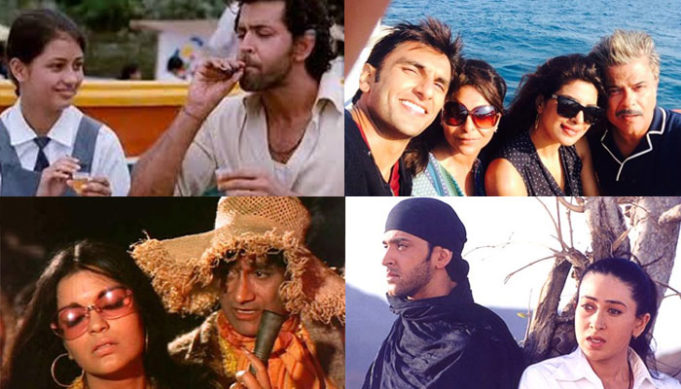Often dubbed as Bollywood, the industry churns out hundreds of films a year. In the 60s, Hindi films often carried a tragic theme, reflecting the difficult lives of underprivileged Indians with comical relief of legendary actors like Mahmood, and melodious compositions from musical geniuses like RD Burman. Foreign locations offered audiences the chance to immerse in a dream world and experience the beauty of landscapes far beyond their financial capability – cinema for less-developed India was a form of escapism.
Over the decades, the creativity of filmmakers developed as they took audiences deeper into the realms of fiction with glamorous dance sequences and majestic lifestyles of characters. Meanwhile, Western cinema was experimenting with technology, thus action and sci-fi dominated Hollywood flicks.
Modern Bollywood
Recently in Hindi cinema, there has been a rise of fresh-thinkers and experimenters. Previously, the aim was to mix drama, romance, action and comedy in 180-minutes that a whole family, from a 90-year-old granny to a 3-year-old toddler could enjoy together. The majority of audiences were less privileged people who saved their hard-earned rupees with the hope of catching a film premiere at the end of the week.
Today, filmmakers have established different niches, meaning Hindi Cinema is no longer exclusively for family entertainment. The needs and tastes of different audiences and ages have been recognised, resulting in diversity of films such as the young vitality of Dil Chahata Hai (2001) and questioning social perceptions with Taare Zameen Par (2007).
Asians living abroad took to this new wave of films like a fish to bate. Younger generations had become disillusioned by the cliché of Indian heroines dancing in fields and heroes fighting a gang of armed-thugs single-handedly. The realistic twist to a fictional concept managed to balance the needs of both domestic and international audiences of Bollywood.
Oscars
In turn, this made Hindi films credible for the biggest accolade in the global film industry – the Oscars. Falling far behind in nominees compared to their Asian counterparts – Japan and China – the first Indian film to be considered for nomination was Mother India (1957). The second nomination was decades later with Salaam Bombay (1988). In 2001, India held its breath as Lagaan (2001) was nominated; the closest Bollywood had made it to champion the foreign films category.
Despite Bollywood failing to succeed beyond the nomination stage, the dream of Indian success at the Oscars feels closer than ever. It has encouraged filmmakers to seek foreign attention with more investment from large corporations and the magic of marketing. Incorporating international matters in film themes has also proved successful with post-9/11 themed films receiving colossal praise; namely New York (2009), Kurbaan (2009) and My Name is Khan (2010).
Making Bollywood Global
Prominent members of the Hindi film fraternity attending international film events have contributed to raise Bollywood’s universal profile. From Abhishek and Aishwariya Bachchchan at the Cannes Film Festival to My Name is Khan (2010) getting the biggest international release of a Bollywood film, it appears filmmakers are realising the potential of global marketing.
Filmmakers have grasped the power of exposure as the key to success in nearly every industry. However, they have managed to maintain the key aspects that stand Bollywood unique to all other film industries – the magic of music, slapstick comedy, emotion and the focus of family or culture. Whilst upholding these fundamental trademarks, new themes and modern concepts have been ventured with fruitful outcomes.


















